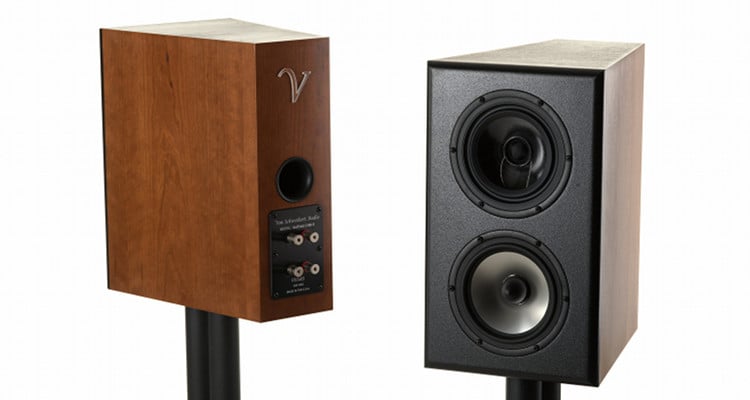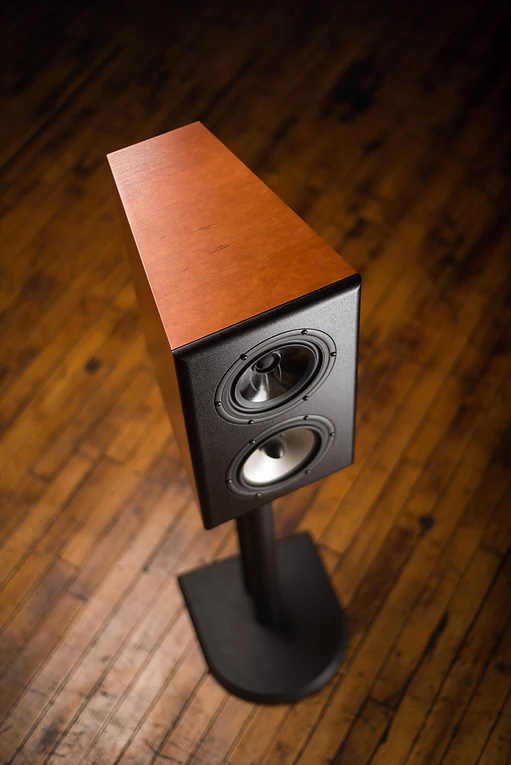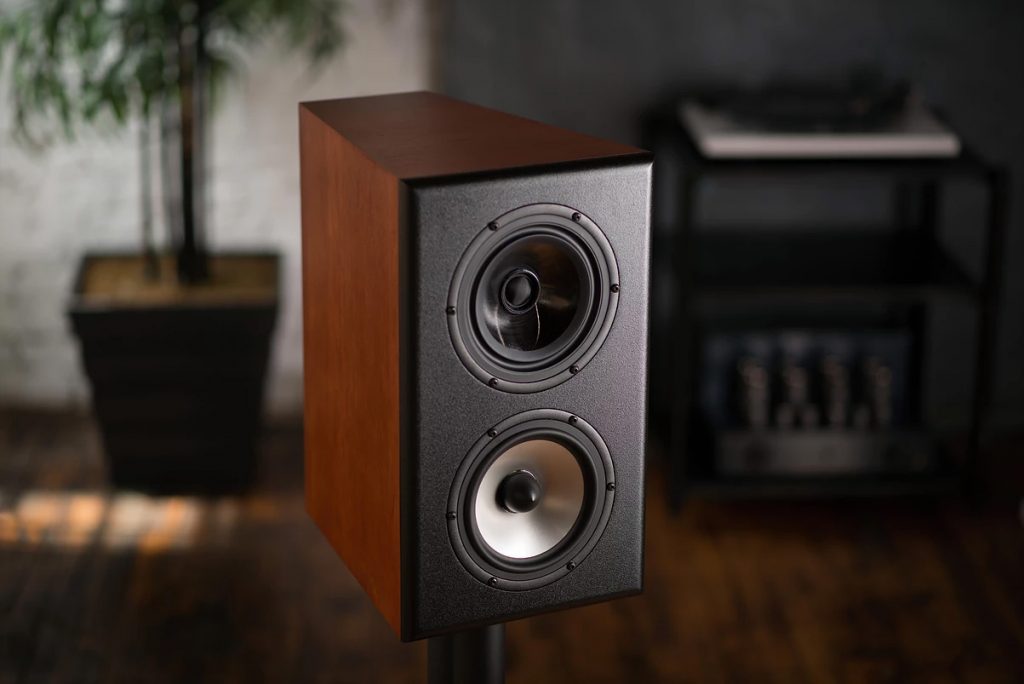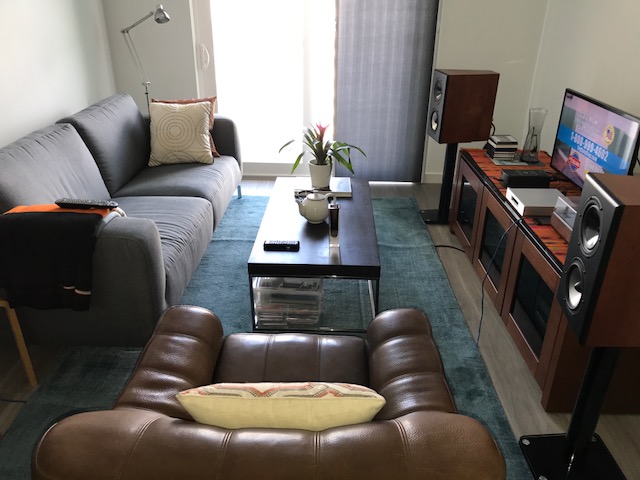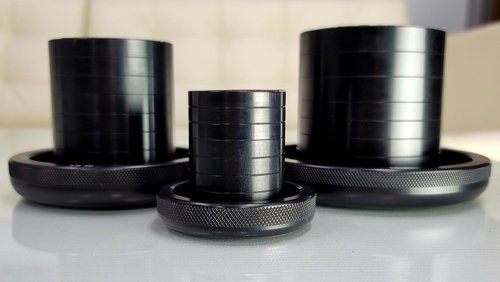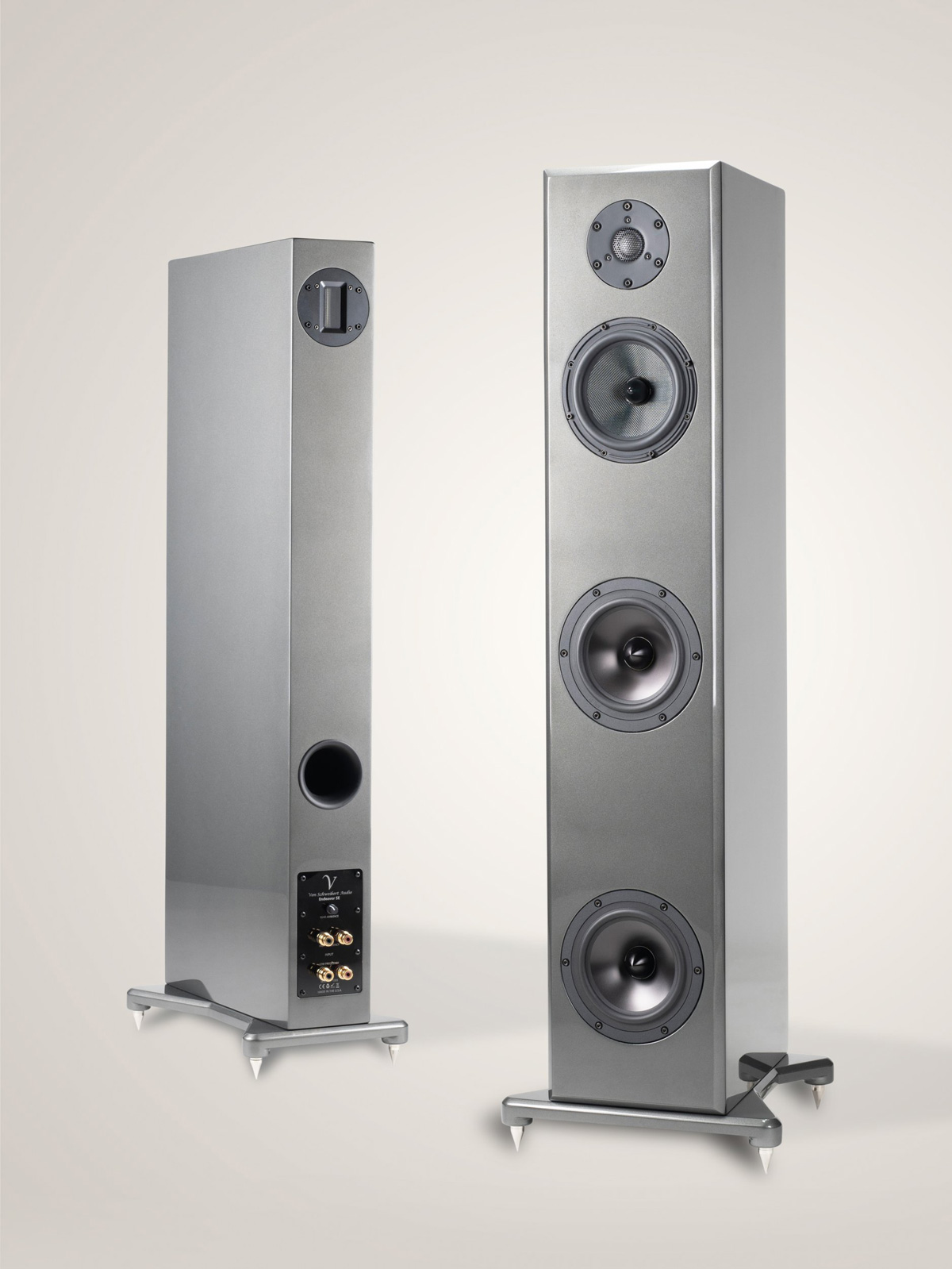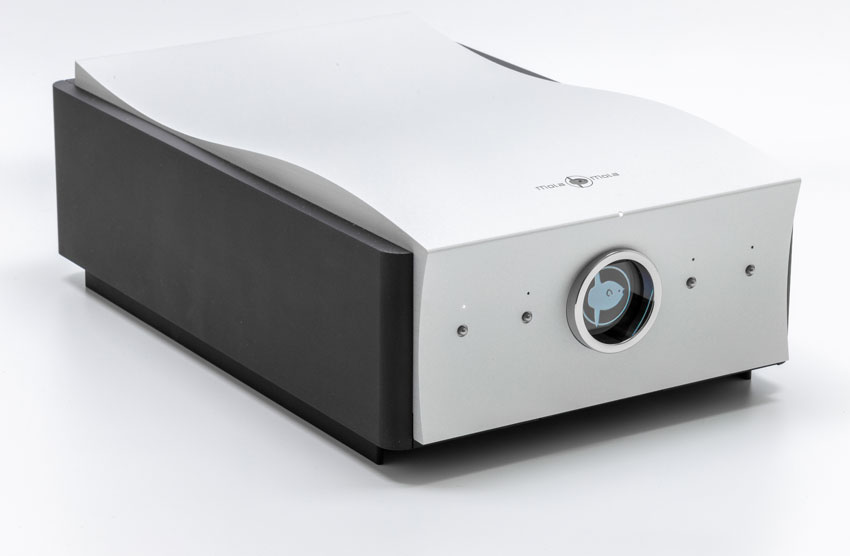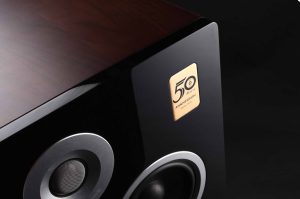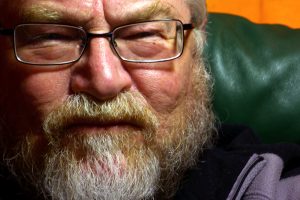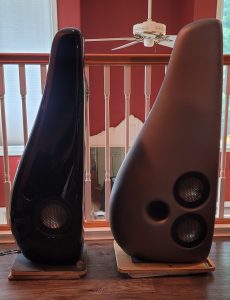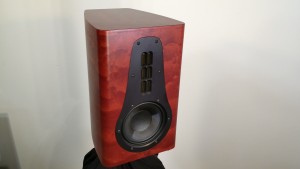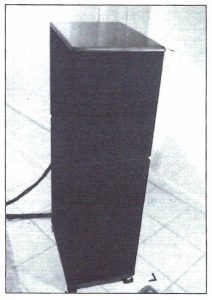Sizing Things Up
Straight out of the box, the new Von Schweikert Audio Unifield 2 Mk III Loudspeakers (a replacement for the highly regarded Mk II version that came out several years ago) remind you that they are no ordinary compacts. For starters, these hefty beasts tip the scales at just over 50 pounds—each. Speakers in this weight class tend to be compact floor-standers, not three-way stand-mounts. Yes, you read that right: the Unifield 2 Mk III's eschew the traditional two-way tweeter/mid-woofer driver configuration in favor of a novel three-way arrangement.
From the Von Schweikert Audio website
Building on the success of the company's smaller Unifield 1, the 2 shares the 1's dual-concentric midrange/tweeter assembly, augmented here by a high-quality 7" aluminum-coned "Super-Duty subwoofer operating below 80Hz" (and for which the company claims an impressive -6dB cutoff point of 32Hz). The tweeter, a high-quality soft dome unit, sits in the concentric driver's physical and acoustical center, i.e., it's throat. In theory, this arrangement should deliver superior inter-driver coherence and transparency because the high and mid frequencies launch in phase from a point-source. By extension, these frequencies should arrive at the listening position at roughly the same time, their important phase characteristics more-or-less intact. In practice, this pretty much correlates with what I heard, especially in the delicate tweeter-to-mid transition range.
The mid-bass section of the driver, apparently formed of polypropylene, is physically transparent, allowing one to see the tweeter wiring assembly as well as the driver spider, here black versus the standard yellow. From this vantage point, everything looks nice and tidy. VSA apparently chose this driver because they feel that it imbues the speaker with a BBC-like level of midrange clarity, musicality and naturalness. The bass driver is finished in a high-tech metallic silver/gray, a black bullet-shaped phase cone proudly protruding from its center.
The 2 eschews the cosmetic bling, refreshingly IMO, that all too often masquerades as technological sophistication in far too many high-end products. Their attractively distinct contours (wide in front, much narrower in back), superior five-way, bi-wired binding posts, and their marmoreally solid cabinets, shout quality and thoughtful engineering. VSA claims that the trapezoid-shaped cabinet suppresses standing-wave resonances, a claim that my extensive listening tests once again confirmed. The trapezoid shape also gifts the speaker with a clean, Bauhaus-like aesthetic.
From the Von Schweikert Audio website
Triple-layer cabinet construction (a signature VSA design innovation) consisting of 2.75" thick walls "of 20mm resin impregnated fiberboard, 20mm artificial stone, 20mm rubberized felt, and 5mm vibration-proof adhesive layers" ensures impressive rigidity, relatively high mass, and extraordinarily low box-noise. Perceptive readers will note that the trapezoid shaped cabinet mirrors the cabinet shapes employed in VSA's value-oriented Endeavor speaker line. VSA's Leif Swanson verified my lingering suspicion that the 2s represent a kind of inter-line hybrid in that it borrows freely from both the VSA reference line of products (particularly the 2s heroic triple-layer cabinet construction) and the Endeavor range (the unique cabinet shape).
Leif was also kind enough to clarify a misconception that I, and I suspect others, have operated under with respect to the VSA-Endeavor relationship. It turns out that before he joined VSA full-time (following the latter's acquisition of Endeavor in September 2015), Leif consulted with VSA on a wide range of earlier projects. The Endeavor Audio E-3 loudspeaker that took the sub-$10K market sector by storm several years ago to a large degree represents the fruit of these earlier collaborations. The E-3 (and the $35K/pair E-5) endeavor (pun intended) served as a kind of maiden voyage for Leif and a dipping of toes into new waters for VSA, albeit from behind the scenes.
The review pair (courtesy of VSA via Sound by Singer in New York) arrived neatly tricked-out in a natural cherry wrap. I thought the speakers looked stoically handsome in an understated, button-down kind of way. The speakers also come finished in black piano gloss. According to VSA's Leif Swanson, the speakers perform best when bi-wired. Unfortunately, I only had single-wire speaker cables on hand for Part I of this review, meaning that it falls to a later date to report on the sound of the 2s "properly" wired, so-to-speak. For this review, the speakers sat perched atop 24" high Deco stands.
Mighty Midgets
Two words best capture my overall impressions of the Unifield 2's sound, from review start to review finish: precision and clarity. Whether reproducing the resonant bellow of a baby grand, or the wispy traces of a soprano in full bloom, the 2s captured every inflection, turn of phrase and musical line with unwavering fidelity.
Quite unexpectedly, at least to me, acoustic jazz (which formed the bulk of my listening session choices) seemed to benefit the most from the 2's sonic veracity and transparency. Recordings that could come across as overly ripe and "wet" in euphonically voiced systems (the ECMs come to mind here) instead sounded utterly natural and properly balanced through the 2s. Tomasz Stanko's 2004 masterpiece Suspended Night (ECM B0000V765G/CD), a perennial favorite here at casa Jeffries, sounded convincingly atmospheric, moody and dense, but never muddy, bloated, or oversaturated tonally. The 2s convincingly delineated each instrument in Stanko's energetic quartet naturally and realistically within the sound-field, while never losing sight of the sonic whole. Although each thread in the sonic tapestry remained audibly distinct, this did not rob the performance of its cut-from-whole-cloth consistency and cohesiveness.
Indeed, overall coherence stands out as one of the design's defining strengths. In general, two-way speakers enjoy both theoretical and pragmatic advantages over three-ways (and if the designer is feeling truly adventurous and non-risk averse, four and five-way designs as well). With only a single crossover network to implement, designers of two-way models can, in theory, more easily integrate woofer and tweeter outputs into a coherent sonic piece. Despite these advantages, skillful crossover design and driver selection (or in-house driver manufacturing) can bestow similar sonic benefits on multi-way speakers. Additionally, dedicating separate drivers to the midrange and bass ranges can free the all-important midrange unit from shouldering more of the frequency load than is ideal, resulting in a more open, transparent midrange balance. In any event, the 2 does indeed share with its BBC progenitors a superb midrange coherence and intelligibility, fulfilling a stated design goal of the VSA team.
This coherence also allowed the 2s to deliver first-class sound-staging and imaging. On well recorded discs, both silver and vinyl, voices and instruments floated free of the speaker cabinets, seemingly untethered from physical constraints. Depth cues projected back reasonably far, but my system is not the best when it comes to the recreation of recorded depth information, an aspect of sound reproduction that probably means less to me than it does to other reviewers. Still, the 2's performance in this area never proved less than respectable, again given the limitations of my all solid-state system. The 2s also reproduced height cues effectively, but not to the same degree as your typical planar speaker. I mention this only as a point of sonic comparison. Listeners (like me) enamored of the sound-staging and height scaling capabilities of Maggies, MartinLogans, and line-source speakers like Bob Carver's new Amazing Line Source speaker, will hear a different presentation with the 2s.
Overall, 3D scaling was quite good for a speaker of such compact dimensions, this likely a function of the excellent dispersion characteristics of the coaxial driver. More importantly, at least to me, the 2s image with a precision and focus that no planar I know of can match. They eschew the technicolor sound-staging bravura of something like a Maggie 1.7i in favor of a more focused, literal view of things. As a longtime fan of minis and compacts for just this reason (I have owned examples of both from Epos, PSB, and Celestion, so I know whereof I speak), especially given my preference for smaller living spaces, I find the 2s quite compelling in this regard. I think most listeners will be similarly impressed.
Moving down the frequency range, the 2's superb bass performance deserves special mention. Boasting exemplary extension and linearity, not to mention class-leading pitch and textural definition, the bass on offer here would not sound out of place on a much larger speaker. Reaching cleanly (and authoritatively, I might add) into the mid-30s, the 2's lows gift classical works, power rock and pop, and naturally recorded acoustic jazz with real power, traction, and scale. On a well-recorded disc like Claudio Abbado's wonderful reading of Mahler's magisterial 9th Symphony (Mahler Symphony No. 9 [Deutsche Grammophon 0289-479-0561-5/CD]), the 2's stellar bass makes it far easier to appreciate the dimensions and sonic footprint of the Philharmonie (the name given the Berlin Philharmonic's tent-like modern home. If you have never seen the hall, it alone is almost worth the cost of airfare to Germany, so striking is the structure, both inside and out, especially its signature yellow/gold aluminum exterior cladding). Through the 2s, in addition to sheer grunt and weight, one really does get the sense of both hearing and feeling a living, breathing performance hall. The overall effect is quite lifelike.
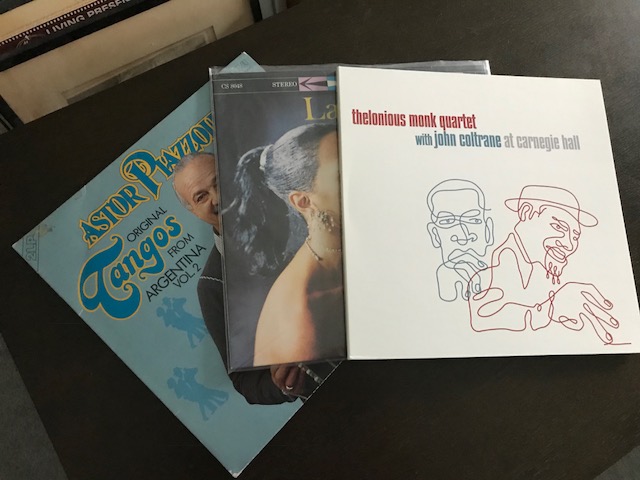
Much of the credit for the 2's superb low frequency performance (apart from the excellent aluminum cone bass driver) owes to the speaker's unique design blueprint. You see, unlike most box speakers in the $10K price range, the 2s (much like the Role Audio Starships that I enthused about last year) use transmission line bass loading to achieve their superb combination of low end power and extension. As I explained when I reviewed the Starships:
"TL loading requires the use of a long duct-like structure, sometimes spiral or elliptical spiral in shape, into which the dynamic driver is fired. The air that radiates behind the bass (or in this case, mid-bass) drivers is forced through this internal duct or labyrinth to reinforce the bottom end of the frequency range. The air in the TL effectively "loads" the bass driver or drivers, lowering its/their resonant frequency. This allows for the extended low-end response one typically gets with TL designs, along with attendant improvements in bass driver damping. Their superior damping factors allow TL- loaded drivers to produce the same or greater low frequency output than sealed or ported systems, but with less driver excursion. In theory, this means that TL designs should be able to generate the same (or greater) low frequency output than sealed or ported enclosures, but with less distortion."
In both theory and practice, the 2's deliver on most of the TL promises, namely low harmonic distortion in the bass range, superior pitch and textural definition (versus most bass-reflex models), plus a relatively smooth impedance curve down low. With my reference Bryston 4B3 power amp doing the driving, I never, ever got the sense that either the speakers or the amp were close to reaching their loudness (and power) peaks. Then again, I really wasn't trying. The 2s play beautifully at relatively low listening levels, and will likely play as loudly as any sane listener might want, at least in the small-to- medium-sized listening rooms for which they were designed. They fit like a glove in my modest 12' by 16' digs, but, I did get the sense that they liked a little juice now and then. I really wouldn't pair them with anything less than say, fifty watts of clean power per channel, either tube or solid state.
Until now, I've had little to say about the speaker's treble performance. This is not because I detected any problems in this region during my many months of listening to the speaker, but rather because there is very little to report here. Clean, detailed, articulate and, most importantly, of a piece sonically with the middle frequencies, the 2's tweeter is a model of understated composure and refinement. Like most soft domes, one will not get quite the airy shimmer and gossamer delicacy that one hears with the best (and usually quite costly) beryllium tweeters (such as those found on VSA's pricier reference-line models, or from brands like Focal and Rockport). The- similarly priced Focal Sopra 1 (currently under review), a compact box that couldn't be more different from the VSA 2, features the inverted beryllium dome tweeter that has long made that brand famous. The Focal's high frequencies seduce with a tactile sweetness and effervescence that many find addicting, myself included. On the other hand, when presented with a sub-optimally balanced recording, or pressed too hard, the Focal's effervescent top end can veer towards over-exuberance, sounding a touch hard and metallic at times, however rarely.
The Unifield 2's soft dome counters with model clarity, enough shimmer and extension to satisfy all but the most finicky listeners, and as noted earlier, the seductive way that it seamlessly blends with the mid-bass driver.
Parting Thoughts
As for shortcomings, they are few but worth noting. First, these are not forgiving speakers. Not in the least! If your front-end sources and amplification chain veer toward the analytical, or brightness heaven forbid, that is precisely how music will sound when reproduced through the 2s. According to Leif, listeners familiar with the more forgiving balance of the MK IIs may find the new balance rather like a splash of ice cold water in the face at 5am (my words, not his).
The 2's balance, a deliberate VSA design choice I'm told, really isn't a problem (or design shortcoming) so much as it simply implores listeners to seek out dealers who can display them properly (re: sympathetically), and make meaningful component recommendations should you decide to buy. In component choice terms, I'd veer toward Grados and Koetsus in the cartridge universe instead of Lyras, and Pass Labs solid state electronics instead of the more ruthlessly revealing CH Precision designs. Naturally-voiced tube electronics should also do the trick.
Given its chosen tonal balance, it stands to reason that the 2 will not satisfy all listeners. In my estimation, they will appeal primarily to listeners who value absolute fidelity above all else. Fans of speakers that deliver a more forgiving (i.e., euphonic) balance may not cotton to their sound. They sounded superb in my setup, but some listeners felt that the more euphonic and forgiving Maggie 1.7is that I use as a reference sounded truer to the romantic intent of some songs versus the über-neutral 2s. Whether they will float your boat really comes down to taste and personal listening preferences. VSA's Leif Swanson informs me that the company designed the speakers for maximum fidelity and to "be as true to the source as possible." This is indeed what I heard.
Lastly, I feel that there is still more to tease out of the 2s performance-wise. For starters, I plan to investigate the bi-wire option as soon as I can get my hands on a pair of bi-wired cables. Second, a little gremlin in the back of my head keeps telling me that the 2s might sound better driven by a tube amp than my unapologetically solid-state Bryston 4B3. If I can get my hands on a glass furnace anytime soon, I promise to report back to you with my findings. Finally, and this is a bit of a criticism, given their weight and unique shape, not to mention their price, the 2s really deserve a custom-designed, heavy weight stand. Something like the custom-built beauties from Sound Anchor would probably do the trick nicely. For ten thousand smackers, purchasers should not have to bother choosing the right stand: one should be provided for them, at least IMHO.
As things stand now, but with more to come, these babies come very highly recommended, with the caveat to leave bright front-end electronics in their boxes.
Von Schweikert Audio Unifield 2 Mk III Loudspeakers
Retail: $10,000.00/pair
Von Schweikert Audio
1040-A Northgate St.
Riverside, CA 92507
951.682.0706




